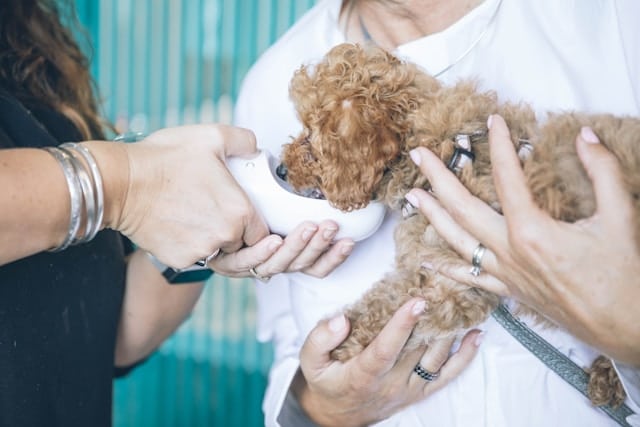What Are the Best Techniques for Reducing Stress During Veterinary Visits for Your Pet?

Visiting the vet can be a nerve-racking experience for both you and your pet. The unfamiliarity, the clinical environment, the noise, and the strange people can all contribute to making your pet feel uncomfortable and stressed. But it doesn’t have to be that way. By implementing the right strategies, you can turn what could be an anxiety-inducing visit into a more pleasant experience for your furry friend. Let’s take a look at some of the most effective techniques for reducing stress during veterinary visits for your pet.
1. Desensitizing your Pet to the Vet Clinic
Even before the actual visit, you can begin to train your pet to associate the vet with positive experiences. This method is called desensitization and it works by gradually exposing your pet to the vet clinic environment.
En parallèle : What Are the Best Cooling Mats or Beds for Pets During the Summer Months?
Start by taking your pet for car rides that end up somewhere they enjoy, like a park or a pet store. Once they’re comfortable with that, begin taking them on short trips to the vet where they receive treats, play in the waiting area, or meet friendly staff members. These positive experiences can help to disrupt their negative associations with the veterinarian.
Another effective way to desensitize your pet is to pair visits to the vet with something they enjoy. If your pet loves to play, bring their favorite toy and play with them before and after the visit. If they’re food motivated, bring treats and reward them during and after the visit.
A lire également : How to Develop a Feeding Schedule That Suits Your Pet’s Nutritional Needs?
2. Make Use of Comforting Scents
Our pets have a highly developed sense of smell. They can detect and react to pheromones in the environment, and these can have a calming effect on them. Feliway for cats and Adaptil for dogs are synthetic pheromones that mimic the ones produced by mother animals to comfort their young.
You can spray these scents on your pet’s carrier or blanket a few minutes before leaving the house for the vet. This can help your pet feel calm and secure during the car ride and at the vet’s clinic. Just be sure to allow the alcohol in the spray to evaporate before letting your pet sniff it, as the strong alcohol smell can be off-putting for some pets.
3. Utilize the Power of Touch
A simple touch can go a long way in comforting your pet. Petting, massaging, or even simply holding your pet can help them feel safer and less anxious. This is because touch helps to release oxytocin, commonly known as the ‘love hormone’, in both you and your pet.
Before the vet visit, spend some time giving your pet a comforting massage. There are many resources online that can guide you on how to give a relaxing massage to your pet. During the visit, if allowed, stay in the room with your pet and maintain physical contact, such as holding their paw or keeping a hand on their back.
4. Keep Calm and Carry On
Pets are highly perceptive and can easily pick up on their owners’ emotions. If you’re feeling nervous or anxious about the visit, it’s highly likely that your pet will pick up on these feelings and become anxious themselves.
To combat this, make an effort to stay calm and relaxed before and during the visit. Speak in a calm, reassuring tone, and act as if the visit is nothing out of the ordinary. Your pet will take cues from your behavior and will feel more at ease if they see that you are relaxed.
5. Choose a Fear-Free Certified Vet
Fear Free is a program that aims to ‘take the pet out of petrified’ and ‘put the treat into treatment!’ Fear Free certified vets have been trained in methods to reduce fear, anxiety, and stress in pets. They use gentle handling techniques, consider the pet’s perspective, and aim to make the visit as positive and low-stress as possible.
When choosing a vet, look for one who is Fear Free certified. This can make a significant difference in your pet’s experience. The Fear Free program also offers resources for pet owners to help them prepare for vet visits, which can be a valuable tool.
Remember, a vet visit doesn’t have to be a stressful ordeal. With these techniques, you can help your pet have a more positive experience, making future visits easier and less anxiety-inducing. Your pet’s health is worth it.
6. Preparation and Routine Check-ups
Preparation is key to ensuring a stress-free visit to the vet. Plan your visit in advance and make sure your pet is well-rested and fed before the visit. This will make them more likely to stay calm and cooperative during the examination. It’s also important to schedule regular vet visits, not just when your pet is unwell. This will help your pet become accustomed to the vet’s office, the staff, and the procedures.
If your pet is due for a vaccination or a routine check-up, try to make the visit as routine as possible. Inform your pet about the visit, show them the carrier or leash, and reassure them with a calm and soothing tone. You can also practice the routine at home, such as getting into the carrier or being on the examination table.
Treats and praises should be a part of the routine. Reward your pet when they behave well during the practice or real visit to the vet. This positive reinforcement will encourage your pet to repeat the good behavior and make them associate the vet visit with rewards and praises.
Lastly, remember to make the routine check-ups fun and enjoyable. Play with your pet before and after the visit, or take them for a walk or ride after the visit. This will help them associate vet visits with fun activities and make them look forward to the visits.
7. Providing a Safe Space
Just like humans, pets need a safe space where they can relax and feel secure. This is especially important during a veterinary visit, a situation that can be stressful for them. A safe space can be a carrier, a blanket, or a toy that they associate with comfort and security.
Before the visit, provide your pet with this safe space. If your pet is comfortable in their carrier, put their favorite blanket or toy in it. If they prefer a certain spot in the house, spend some time with them there before the visit. If they have a favorite toy, bring it along for the visit.
During the visit, make sure your pet has access to their safe space. Let them stay in their carrier if they wish to, or let them hold their favorite toy. Ensure that the staff respects your pet’s safe space and only approaches them when they appear calm and comfortable.
Providing a safe space for your pet doesn’t just comfort them, but it also gives them a sense of control over the situation. It reassures them that they are safe and that you, their beloved owner, are there to protect them.
Conclusion
In conclusion, stress during veterinary visits for your pet is not inevitable. With the right strategies and techniques, you can significantly reduce your pet’s stress and make the visit a more pleasant and constructive experience. The key is to prepare your pet for the visit, make the vet clinic a familiar and positive environment, utilize calming scents and touches, stay calm yourself, choose a fear-free certified vet, make regular routine check-ups, and provide a safe space for your pet.
Your pet’s comfort and wellbeing should always be your top priority. Remember that your pet picks up cues from you, so stay calm and confident. With your love and support, your pet can conquer the fear and anxiety associated with vet visits. The end goal is to ensure that your pet stays healthy and happy, and a stress-free vet visit is a step towards that. So, equip yourself with these techniques and make your pet’s next vet visit a stress-free one.
